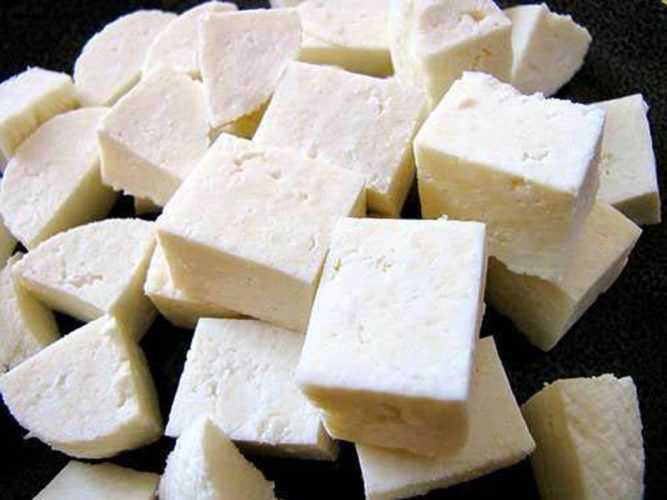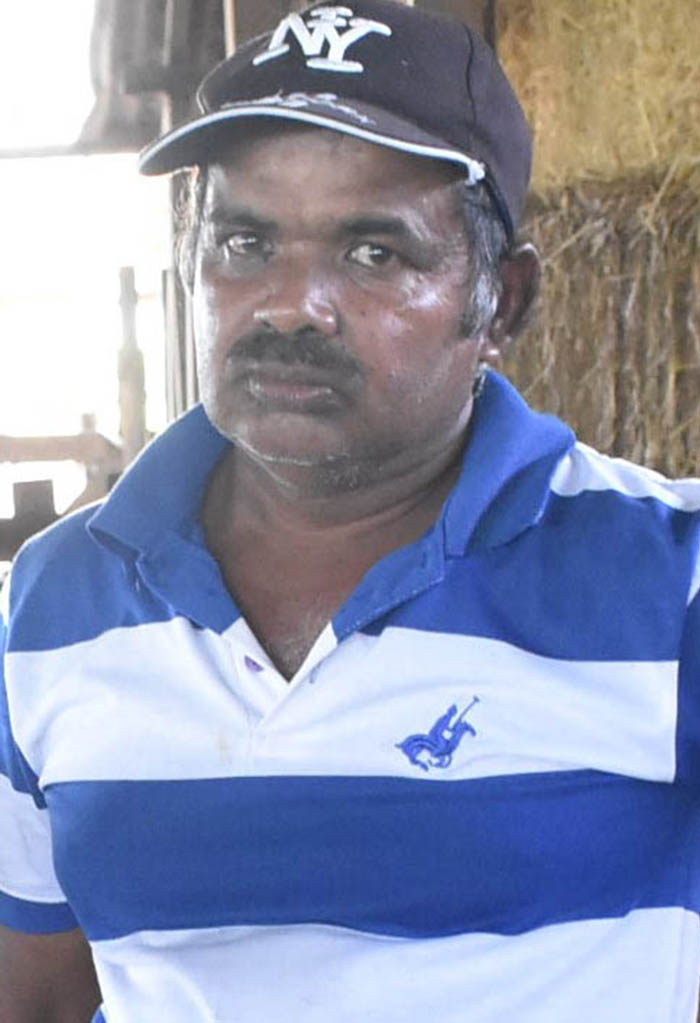Traipse through history of the evolution of cheese, with detours through several indigenous varieties of this much-loved dairy product and you are likely to find that a stunning range of difference of opinion surrounds the origins of Paneer. What, however, would appear to be undisputed is that Paneer is, essentially, “hot, curdled milk masses press-ed together to produce a smooth white solid” that has come to be classified as cheese.
Further research asserts that Paneer falls into the category of “acid-and-heat coagulated cheeses.” It is a process through which, utilizing some acidic ingredient, milk is deliberately “heated and split” into curds and whey.
Flora Gardens, Mahaica River cattle farmer Mohan Singh stumbled upon the Paneer trail in the midst of a diligent search for markets for the milk provided by his cows. He found Paneer instead.

A stroke of good luck had meant that the 48-year-old Mohan’s Canada-based uncle had been introduced to Paneer by a friend in India. During a visit to Guyana Mohan’s uncle had passed on his know-how to his nephew and suggested that it might provide a way out of the challenge of finding a way around a saturated milk market.
Mohan ‘bit the bait’ and it appears that the in-house taste for Paneer led, in the first instance, to the gradual creation of a market centred around relatives, friends and the neighbourhood in which he lives.
Mohan’s good fortune in the marketing of his Paneer cheese appeared to derive from the awareness of the product that had already been created by earlier manufacturing pioneers. By the time his product hit the market, therefore, Paneer had become a common type of cheese used in traditional cuisines from the Indian sub-continent and embraced by East Indians in Guyana. Its culinary versatility is reflected in the fact that it is often wrapped in dough and deep-fried with either spinach (palak paneer) or peas (mattar paneer). Paneer is used in main dishes as well as desserts and snacks.
Mohan can, however, take some measure of credit for pioneering the use of Paneer in communities where it had, hitherto, been virtually unknown. It had all begun with an oversupply of milk and failed bids on his part to market his oversupply of milk at companies boasting dairy-based production lines. These days, he names the Giftland Mall FoodMax outlet, DSL Cash and Carry, Survival Supermarket, S. S Supermarket, Mahaica, the Guyana Marketing Corporation, Real Value Supermarket and “some shops on the East Bank” as being among his key customers.
Insofar as his Paneer exploits are concerned, things would appear to have fallen into place for the Mahaica cattle farmer. His cows provide him with around twenty gallons of milk daily and this, coupled with what he says has been the invaluable contribution which the Guyana Marketing Corporation (GMC) has made to his training and sensitization in the processes of manufacturing and marketing a food product has meant that setting aside the material rewards, Mohan now regards himself as both a cattle farmer and an Agro processor.
If there is a remaining challenge it reposes in his manufacturing operation being located in a community where there is, as yet, no universal power supply. Accordingly, in order to meet the food safety requisites demanded of local agro processors Mohan has had to invest in the acquisition of solar panels and generator. During the discourse Mohan told the Stabroek Business that the community had been promised a reliable electricity supply by year-end.
Clearly energized by his new economic breakthrough, Mohan has transformed his uncle’s counsel into a business option. His wife Taywattie and his daughter Nelan, a teacher, are his key helpers though there are plans to recruit further help once demand for the product increases.






